© 2013 Veronika Marquez
Chinatown | New York | 2013
***
A Body of Work
Interview by Mike Foldes
Q) Did you have what you might say is a hyperactive imagination? Did you play with dolls? Or, were you more engaged with other childhood activities?
A) Until the age of 6, I lived in a humble house on the outskirts of the city, without toys or television and I think this is what stimulated my imagination. I played with mud in the patio of my house and my brother was like a prince to me and that was my world. Later we moved to a neighborhood in the city of Montevideo where the children played on the street and where we spent most of the day. This was a very typical Latin American childhood with lots of games and interaction between the children.
Q) I see in the credits on one of your videos a “Thank you” to two of your brothers, Leandro and Jorge. Do you have other siblings? Are you the eldest?
A) Leandro is my brother who helped me with this series. We lived together during the months that I spent in Montevideo working on this project. He looked after me, making sure I was well, preparing evening meals for me and sharing this work process with me.
Jorge is my husband and, in one form or another, he has always been supportive of my work.
Q) Was yours what one might call an artistic family? What are or were your parents’ professions? And your brothers/sisters?
A) I come from a humble and hardworking family and there isn’t another artist among them. As a result, they don’t understand my work and are not particularly interested in it either.
Performances
Q: How did you happen to get involved with both dance/performance and photography?
I am interested in different disciplines and this is evident in my work. As a visual artist, photography is my base and I build on this through images in movement and my body since my past and present life experiences are the starting point of my work. I complete diverse projects in different ways using regular techniques like Tango, dance, pole dance, butho while also being open to new possibilities.
Q: How long does it take you to stage the various scenes you present?
Each project is different but the process is a fundamental part of it and I take my time to complete it. There are two main avenues to my work. The first is longer and corresponds to larger projects. I like to dedicate at least a year to these and keeping in mind that some of these projects have already been taking form for years in pages of a notebook. When I find the right time to work on a project, I start to analyse how I can develop it technically, as well as the presentation dates, locations and other details, then I start on the production work and finally, post production which is all about perfecting the edition and final presentation. In theory, I like to have it all thought out at the start but in practice the details change as the process continues and the project develops. This is what fascinates me. It is as though projects have their own lives.
On the other hand, my work is about spontaneous photography and I try to enjoy the improvisation in the places where I reside. I am currently working with a 35mm 3d camera.
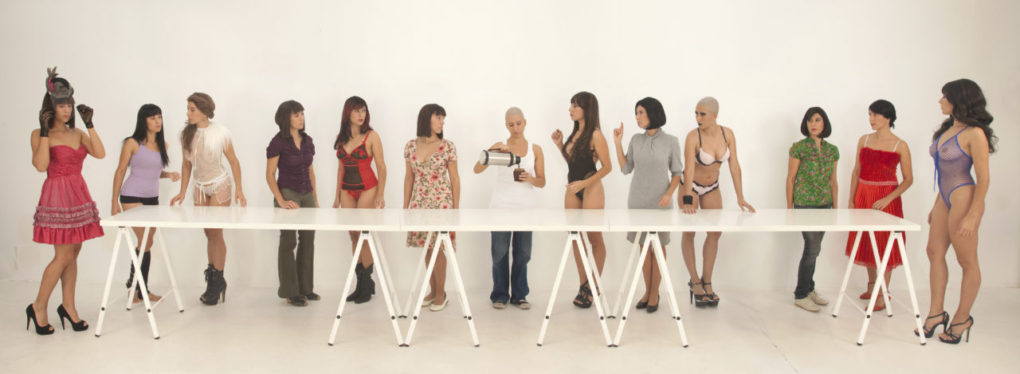
The Last Supper of Veronika Marquez
Q: Do you work with a company of dancers/models?
A) I am the protagonist of my own projects and I work on them myself. I have collaborated on different pieces and in the last performance of “The Last Supper of Veronika Marquez”. I am not involved with any company nor do I work with models but this could change in the future.
Q: Do you work with someone else who does your costume design?
I have taken advice, for example in the photograph of “My Last Supper because it was important to have well-defined characters, but in general I like to find the costumes myself as this is part of the process of character creation. I have carried out many of my projects in different cities and before taking the shots I choose the location and study possible color to incorporate them into the costumes. I worked with the theatre director Mariana Wainstein.
Q: How long have you lived in NYC?
I lived in NY in 2013, and it was one of the cities where I felt most comfortable. I returned there for an artist residency in Upstairs NY when I fell in love even more with the city as this gave me the opportunity to see a different side of it. After that I returned on various occasions for specific projects and I plan to return to NY again this year.
Q: Who are your artistic/dance influences/mentors?
A) The most influential people in my work have been those who were closest to me at different stages: Valeria Pasina who helped me develop skills in dance improvisation, my photography teacher, Julio Menajovsky through whom I developed my love of photography and as a result decided to dedicate my life to this. Ciuco Gutiérrez has been an enormous support to me in the past and continues to be active in my career.
Artistically, the list is long but some influences include Grotowski with his “Teatro Pobre”, Vasco Araujo, Romeo Castellucci, Sophie Call, Loretta Lux, Matthew Barney, Martin Creed. My list changes and lengthens with the passage of time but I love to see current artists with their capacity to tell stories through different media. As a creator, I am always fascinated by and enjoy seeing how they do this.
Q: How long does it take you to stage the various scenes you present?
A) Each project is different but the process is a fundamental part of it and I take my time to complete it. There are two main avenues to my work. The first is longer and corresponds to larger projects. I like to dedicate at least a year to these and keeping in mind that some of these projects have already been taking form for years in pages of a notebook. When I find the right time to work on a project, I start to analyse how I can develop it technically, as well as the presentation dates, locations and other details, then I start on the production work and finally, post production which is all about perfecting the edition and final presentation. In theory, I like to have it all thought out at the start but in practice the details change as the process continues and the project develops. This is what fascinates me. It is as though projects have their own lives. On the other hand, my work is about spontaneous photography and I try to enjoy the improvisation in the places where I reside. I am currently working with a 35mm 3D camera.
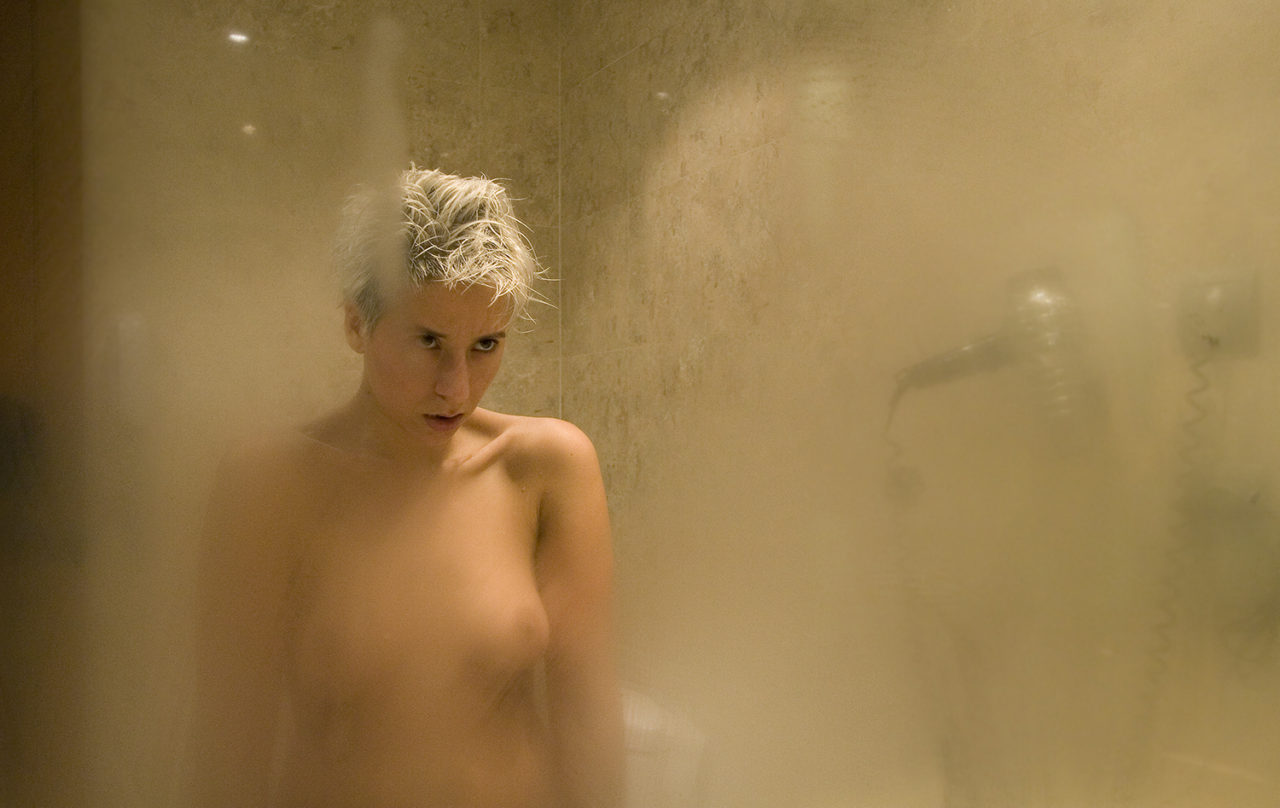
Self-portrait | 2008
Q) Your imagery is extremely sensual on many levels. How did that sensuality, in particular its concentration on the feminine and what the feminine might prefer, originate?
A) I think that that this sensuality comes from my characters in a natural way.
Q) You comment in your introductory statement, in ABOUT on your website, that, “From a very young age I have used my body as an expressive tool.” What do you mean by that? Can you elaborate?
A) I worked with my body as a prostitute and it was my tool of work. Today, as an artist, I continue to work with my body and though this is now from another perspective it is still my instrument of work.
Q) Did this sensuality originate with an outside influence, or from within?
A) I believe that it is natural and to a certain extent developed through my former profession as a prostitute, which relies on and plays a lot with sensuality. In my normal life, I don’t see myself as being that sensual.
Q) I have often thought that, “When I talk to myself, it is as though I am another person.” Is this anything like what you feel when you are devising or acting out your other selves? Are these other selves personalities that are predictable from scene to scene?
A) I work with and investigate the construction of identity. To look at myself I have to step outside myself. Over time, I keep changing ways of doing that that and, from this, new characters emerge.
Santoral Del Sábado
Q) The video performance “Santoral Del Sábado,” in which you recite the poem Canonicemos a las Putas (Let’s canonize whores) by Jaime Sabines*, is the best visual interpretation of a poem I’ve ever seen. How did you happen to come up with it?
A) I found the poem in a blog by Montse Neira (http://prostitucionrealidadessociales.blogspot.com.es), a Catalan prostitute and political science graduate who, like me, believes in dignified prostitution. When I read the poem, I knew I had to do something with it and take ownership of it, artistically-speaking. For me, the performance of the poem was like a religious offering to the profession of prostitution.
Q) What other poets/writers do you read, that influence your thinking, feeling and your work?
A) Now, I am focused on authors working on themes of identity like Alva Noe, Pascal Gielen, Wagner Schwartz, Paul Churchland and Christine Greiner.
New York
High Line | New York | 2013
Q) I first saw your work in L’oeil de la Photographie, the piece you did in New York on the High Line. How long did that take, and did you work alone or with others who helped handle the camera?
A) I did it in during the summer I spent in New York. I looked for locations, places that would provide the scene for my photographs. I waited for the right light, set up the tripod and my camera, looked for the frame and I transformed myself into my characters. I asked passers-by to take as many little photographs as possible (to be put together later). The people passing by had no idea what to expect and then they saw me dancing, performing in the public space between people, cars, etc. It was great fun with a lot of improvisation but everything turned out as I had planned.
Q) Did you learn the elements of photography in school? Who were your strongest influences? Any special teachers?
A) In Buenos Aires, I studied black and white photography and photojournalism. In Spain, I did a Masters in photography, photographic lighting, etc. I specialized in video…. and I am constantly learning new techniques to develop my projects.
Q) How did you develop your technique of multiple exposures, using your own multiple personalities?
A) Since the age of 12 I have worked with self-portraiture and have been looking for new ways of multiplying myself. I imagine the scene and then I represent it. I see myself as a creator and by my side other versions of “me” that are the different characters. It is as though I were a kind of agency with characters and, depending on what I want to say, I call on one or the other to represent the idea. They embody the idea in their way and I, as the creator, record and shape it.
For the technical side of things, I always use a tripod. I take one shot and then the other in a short period of time. Although I work with different lighting I like working with sunlight best as it looks most natural.
Q) What project are you working on now, and when do you anticipate its completion?
A) I have just come from a residency in Berlin where I developed “Performative Photography” and now I am in Uruguay as the artist in residence of the EAC museum, where I continue to work on this idea, performing in the museum and creating new images.
Q) Do you have any favorite works, or is that like asking a mother to tell you who is her favorite child?
Montevideo
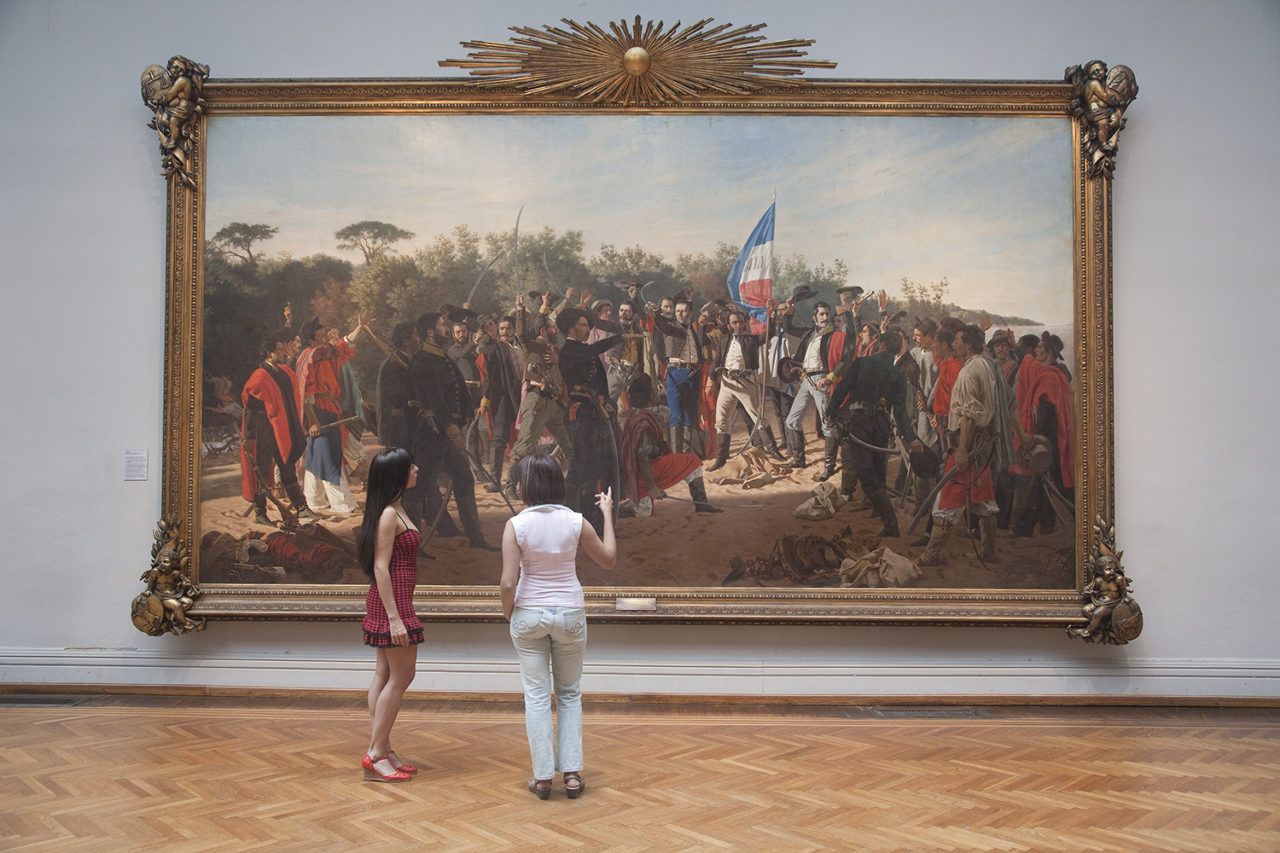
Montevideo | 2011
A) Montevideo is one of my favorite works because, at a personal level, it marked a meeting with and showed my infatuation with my native city.
Q) What kind of equipment do you favor, and once you are done shooting, how much time does it take you digitizing the final images?
A) The fundamental equipment includes the camera, video and tripod and after that the lighting, projector, audio equipment, printer and 33 mm camera.
Q) If you were able to live in any city, what would it be? Why?
A) New York, Berlin and Montevideo are all interesting cities and like everything else, no place is perfect.
Q) Is there anything you would like to add that we have not covered, or that you would like our readers to know about you and your work?
A) No.
Ragazine: Thank you!
ESPEJO II
CAMILA
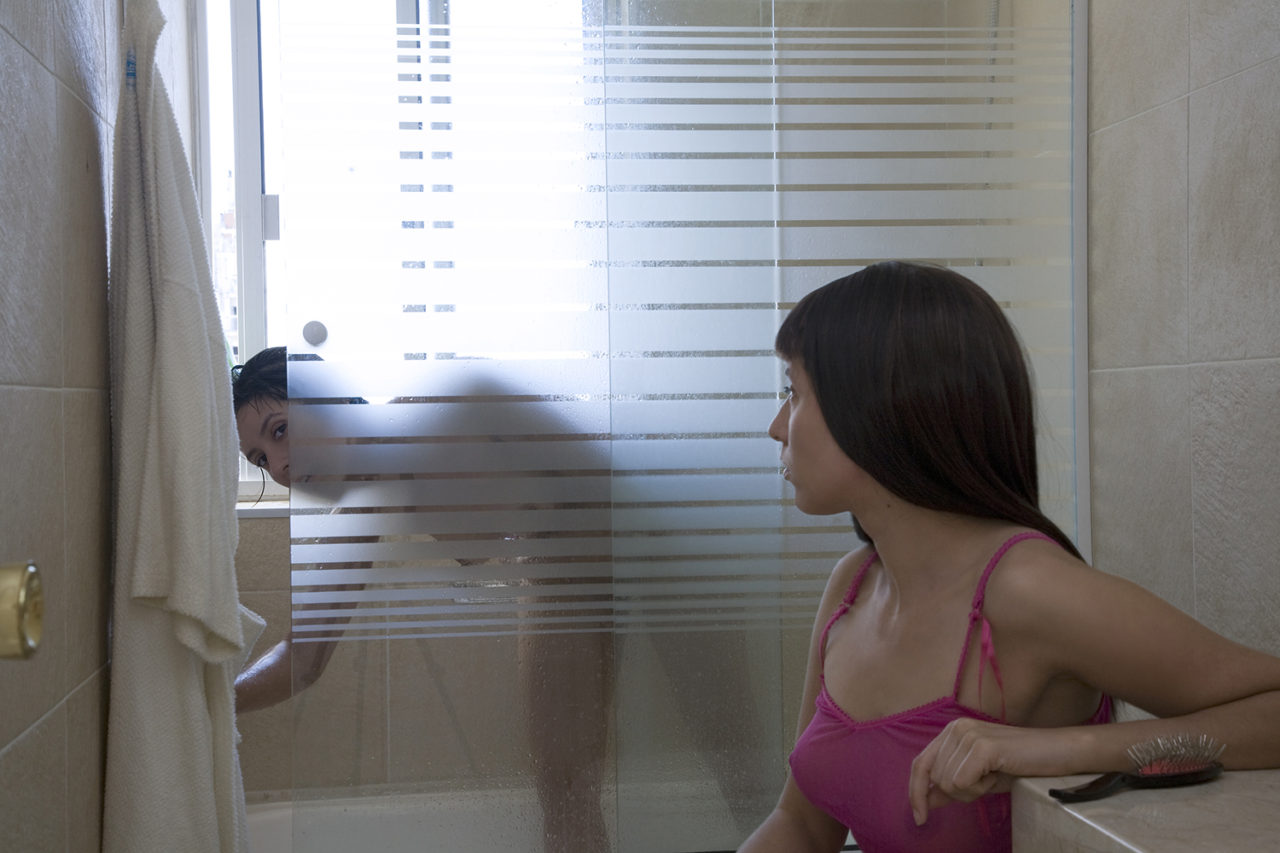
Camila
All images use with permission © Veronika Marquez
See more of Veronika Marquez’s work here: http://www.veronikamarquez.com.
About the interviewer:
Mike Foldes is founder and managing editor of Ragazine.CC. You can read more about him in About Us.
This e-interview was conducted in January and February, 2017.
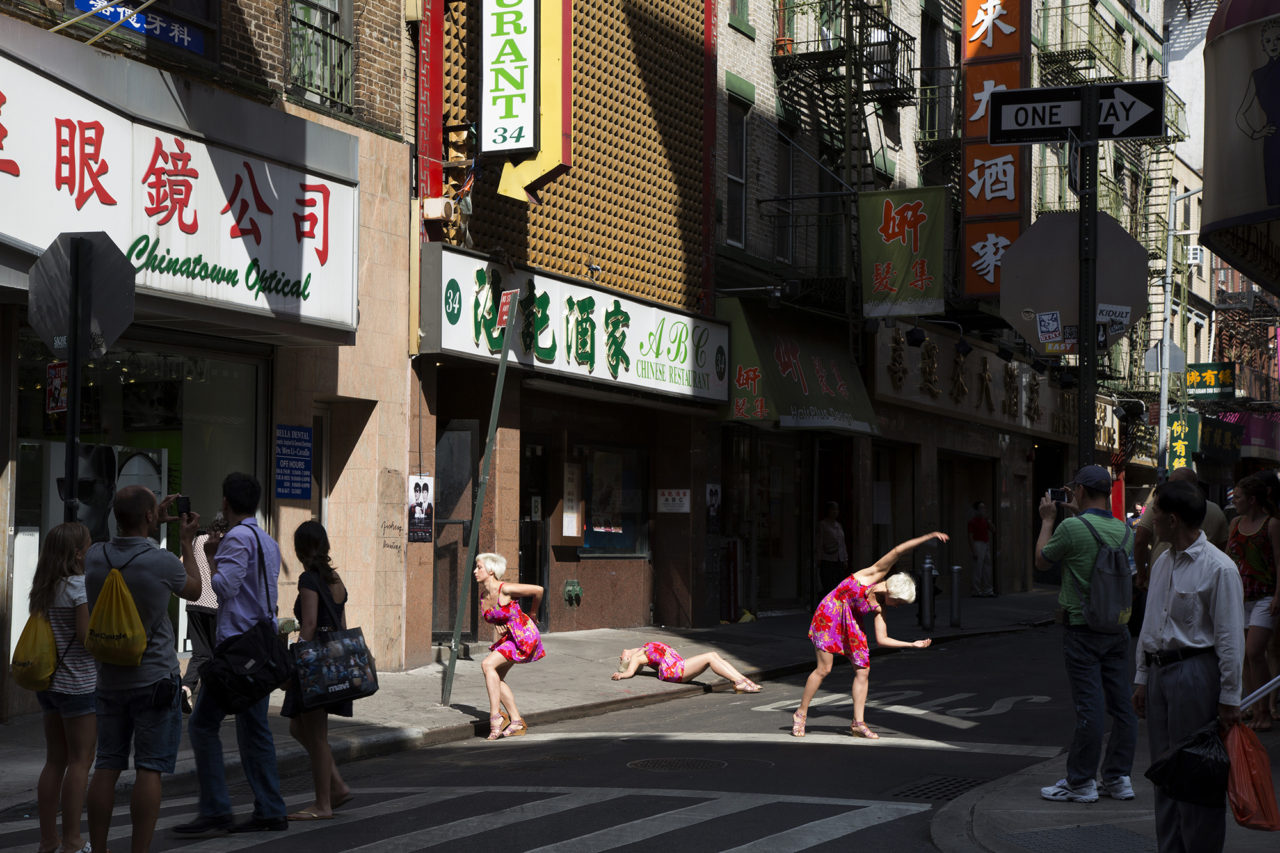

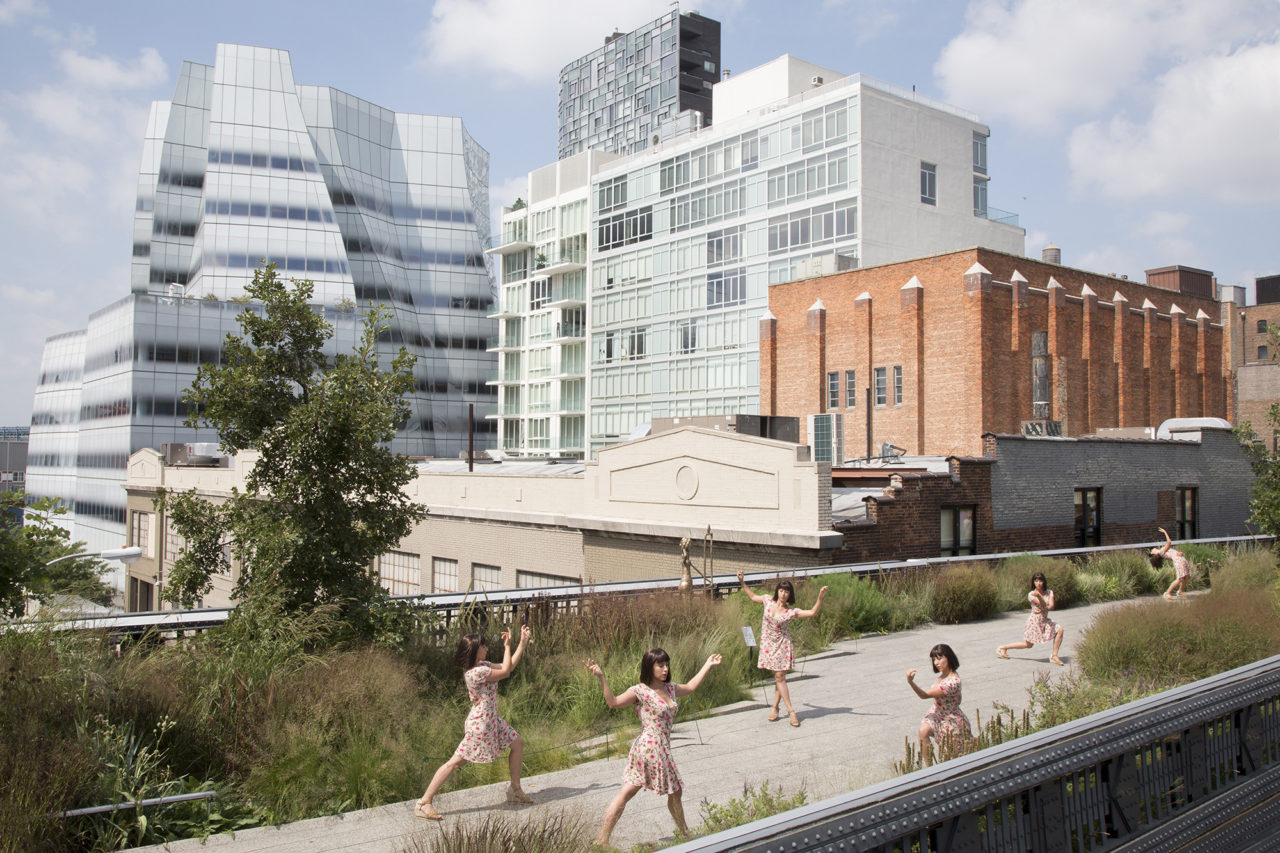
Recent Comments